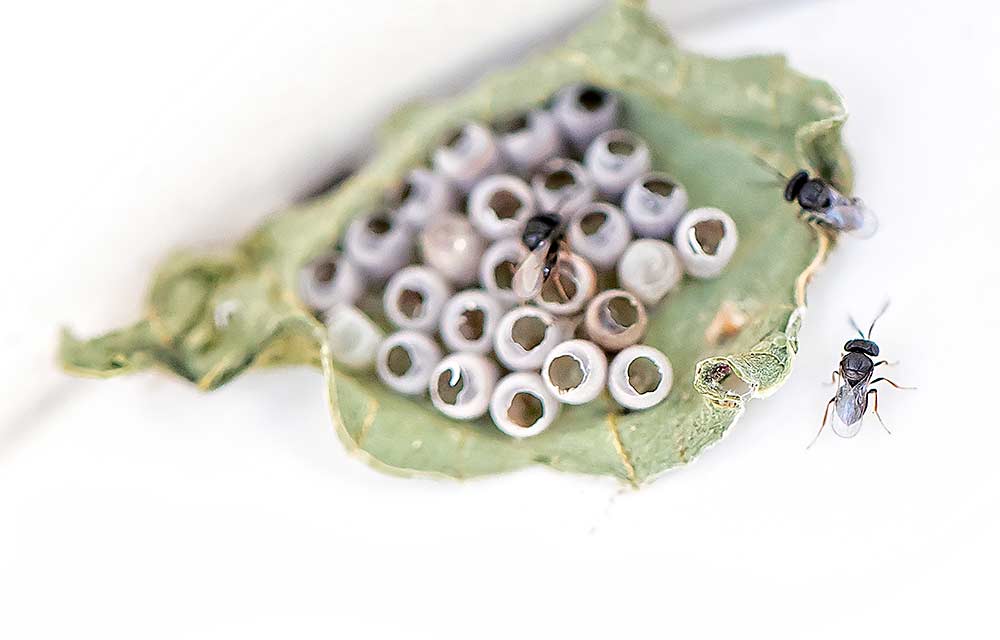
The tiny samurai wasp (Trissolcus japonicus) seems to be making itself at home in the United States, wherever its host, the brown marmorated stink bug, has settled. Many states hope to boost the parasitoid wasp’s presence as a biocontrol by augmenting those wild populations with planned releases.
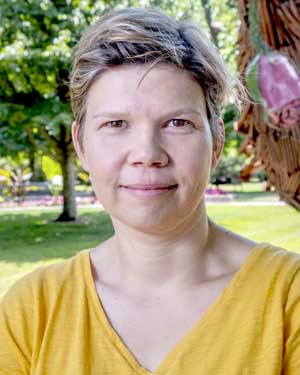
BMSB, an invasive species from Asia, has done a lot of damage to U.S. fruit crops in the last decade. The stink bug’s natural enemy, the samurai wasp, followed it here and was first detected in the wild in Maryland in 2014. The wasp has been spreading ever since, said Marianna Szucs, an assistant professor and entomologist with Michigan State University.
In 2018, Szucs’ lab first discovered a wild population of the parasitoid in Michigan. Once found in the wild in a state, regulators typically allow for population redistribution, and her lab at MSU started releasing samurai wasps at strategic fruit locations the following year. They want to increase the wasp’s population densities and distribute them more evenly around commercial fruit regions. Her team is concentrating on releases near apple orchards, where BMSB poses the biggest threat. In 2019, they released 4,000 adult wasps throughout the state, Szucs said.
It’s too early to know if the released wasps are targeting BMSB yet — or if they’re even establishing a stable population. They will do another release next year, Szucs said.
Szucs and her team rear their population of samurai wasps in a laboratory, using BMSB egg masses from a facility in New Jersey. Adult wasps lay their eggs on BMSB egg masses, and young wasps eventually hatch, she said.
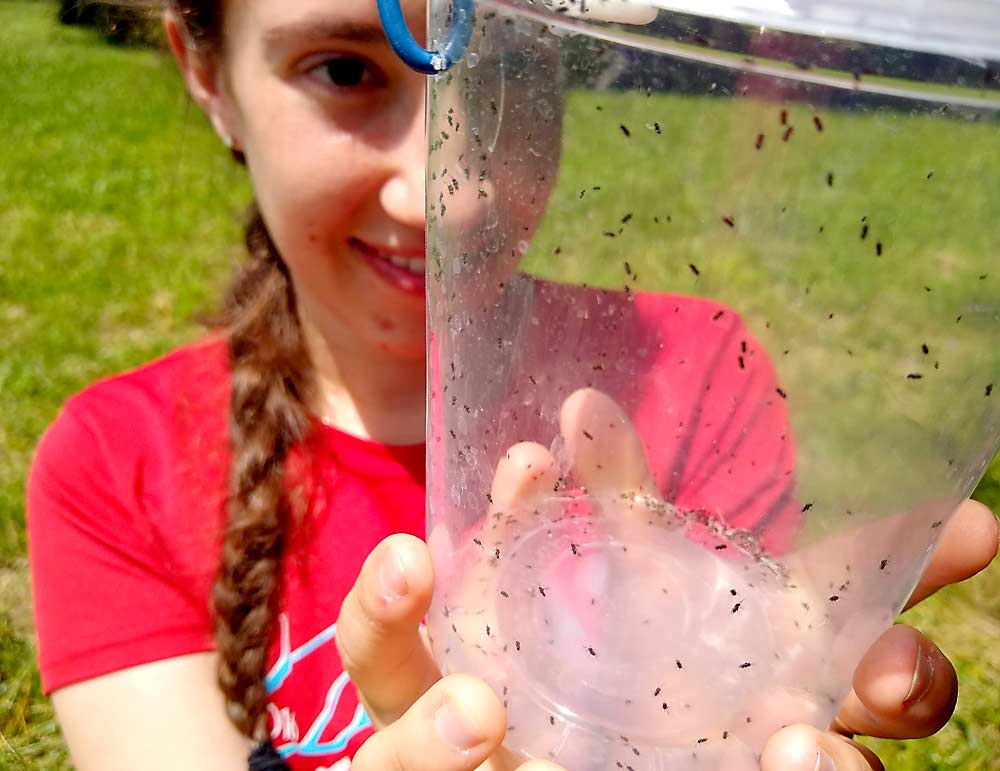
The mid-Atlantic region, where BMSB and the samurai wasp first showed up in the United States, has seen reductions in BMSB populations in some areas where samurai wasps are known to be established, said Tracy Leskey, director of the U.S. Department of Agriculture’s Appalachian Fruit Research Laboratory. She said researchers in West Virginia, Virginia, New Jersey and Pennsylvania are distributing wasps within their states and hope to see decreases in BMSB populations over time.
“We’ve seen a fair amount of emergence, which is exciting,” Leskey said. “All of us are hopeful this will have an impact.”
Pacific Northwest
Nik Wiman, an orchard specialist for Oregon State University, started a statewide redistribution program in 2016, the year the wasp was found in the wild in his state. His team confirmed that the wasp can successfully overwinter at a number of release sites in orchard production areas around the state. But it’s too soon to tell if the established wasps are affecting BMSB populations.
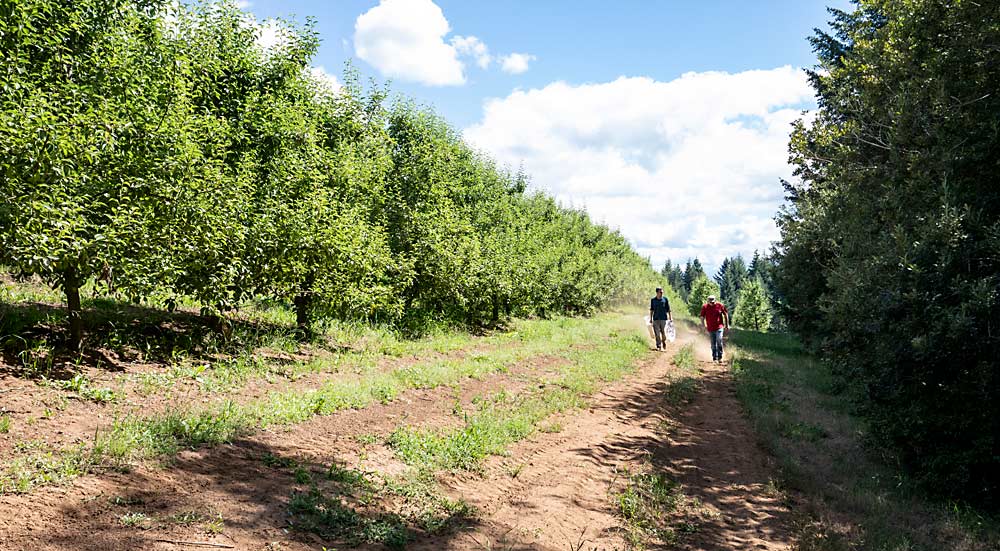
“We’re trying to learn about environmental adaptations that might lead to success in different regions,” he said. “We’re hoping we can confirm establishment and overwintering in southern Oregon this year. As of last year, we weren’t able to do that.”
Several years after its arrival in Oregon, growers now report BMSB causing significant damage to the state’s specialty crops, and attempts to control it wreak havoc with integrated pest management systems that took years to develop. It would be a shame if growers had to start relying on the widespread use of broad-spectrum insecticides to protect their orchards, Wiman said. He’s hoping the samurai wasp will be effective enough to help growers avoid that, he added.
Even for established wasp populations, it will take time to catch up to the stink bug numbers. Wiman’s team releases wasps every year, but rearing them in the lab depends on a steady production of eggs from BMSB colonies, he said.
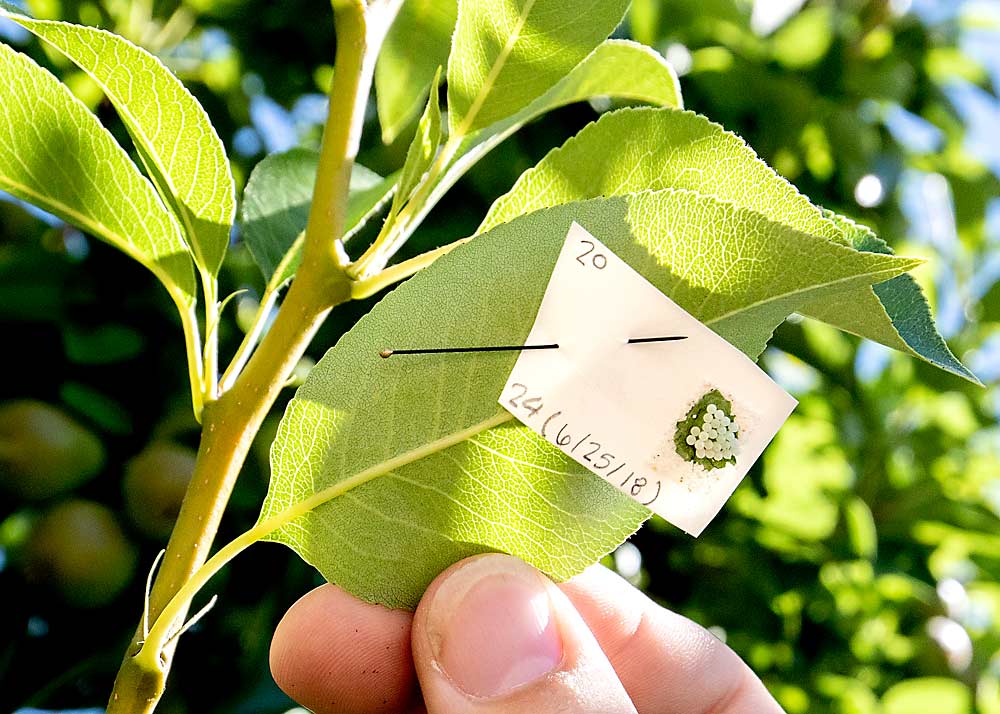
In Washington state, Joshua Milnes, the pest board program coordinator for Yakima County, releases samurai wasps in downtown Yakima — where homeowners’ reports indicate a BMSB hotspot — in hopes that they will intercept the pests before they move into surrounding agricultural areas. Once BMSB gets into orchards, it’s difficult to combat, he said.
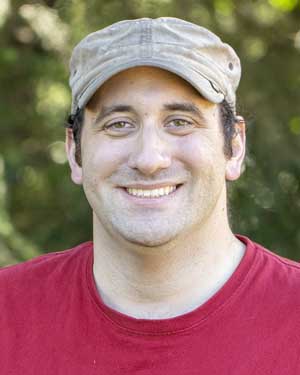
Milnes released more than 233 wasps in Yakima last year, and he wants to release more this year. He said the wasp can play a major role in controlling BMSB populations, but it’s not a “golden solution.” It’s unrealistic to expect the wasp to eradicate BMSB entirely, but he said the parasitoid could bring the stink bug’s population down to a “low-equilibrium density” — to the point where BMSB is “just another bug.”
“It’s going to take a long time for that to happen,” Milnes said. “Biological control is a process.”
Milnes was the first person to detect a wild population of samurai wasps in Washington in 2015, when he “stumbled across” a parasitized BMSB egg mass near Vancouver, on the southwest side of the state. He’s been releasing wasps ever since.
Milnes was excited to find more wild wasps two years later, about 200 miles east of Vancouver in the semiarid habitats around Walla Walla. That find revealed that the wasp could survive in the state’s varied ecological regions. Vancouver’s wasp populations seem pretty well established five years later, and the populations in Washington’s more arid eastern regions show promise, too, he said.
—by Matt Milkovich
Related:
—Raising a stink for BMSB research
—BMSB is still raising a stink






Leave A Comment